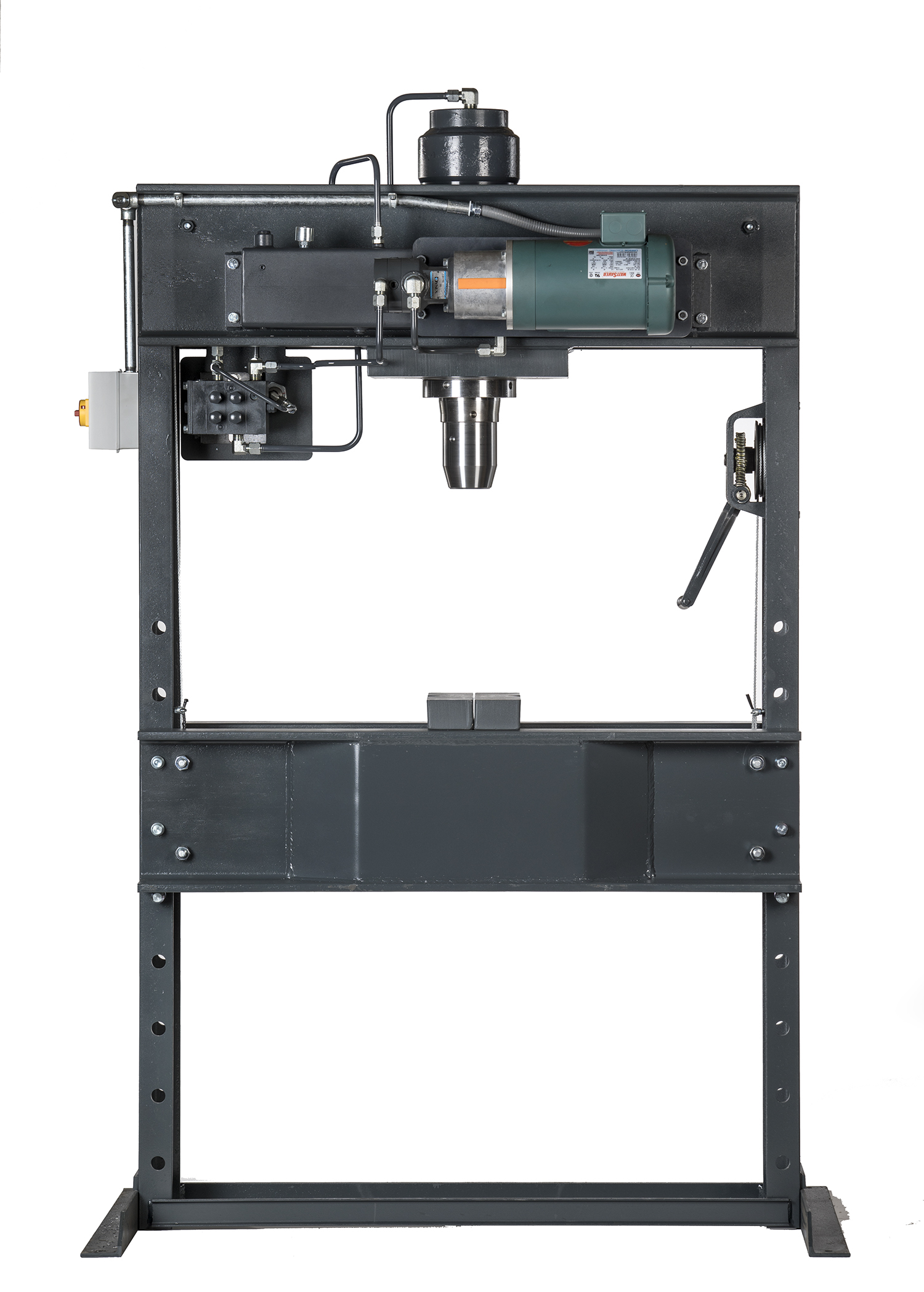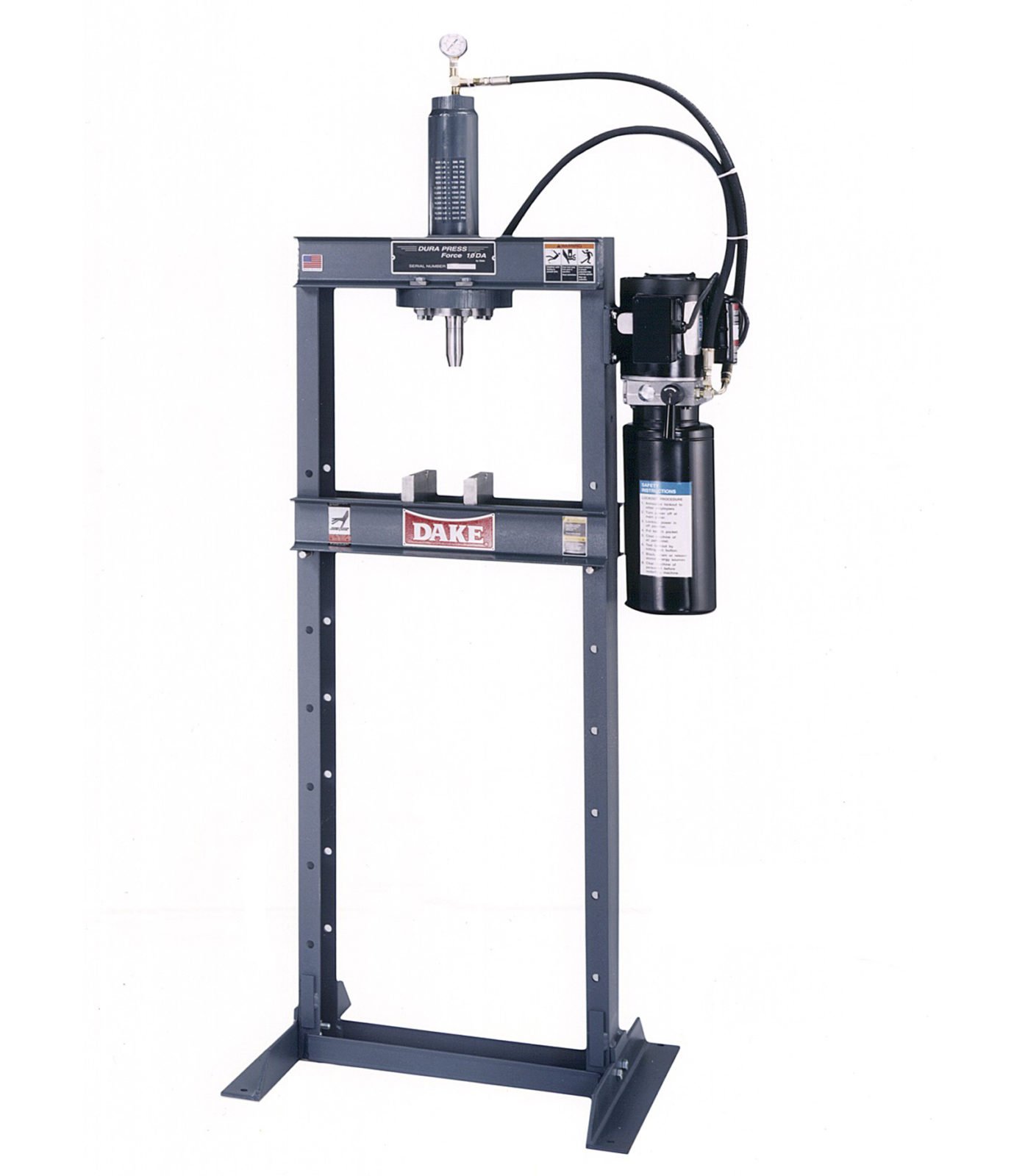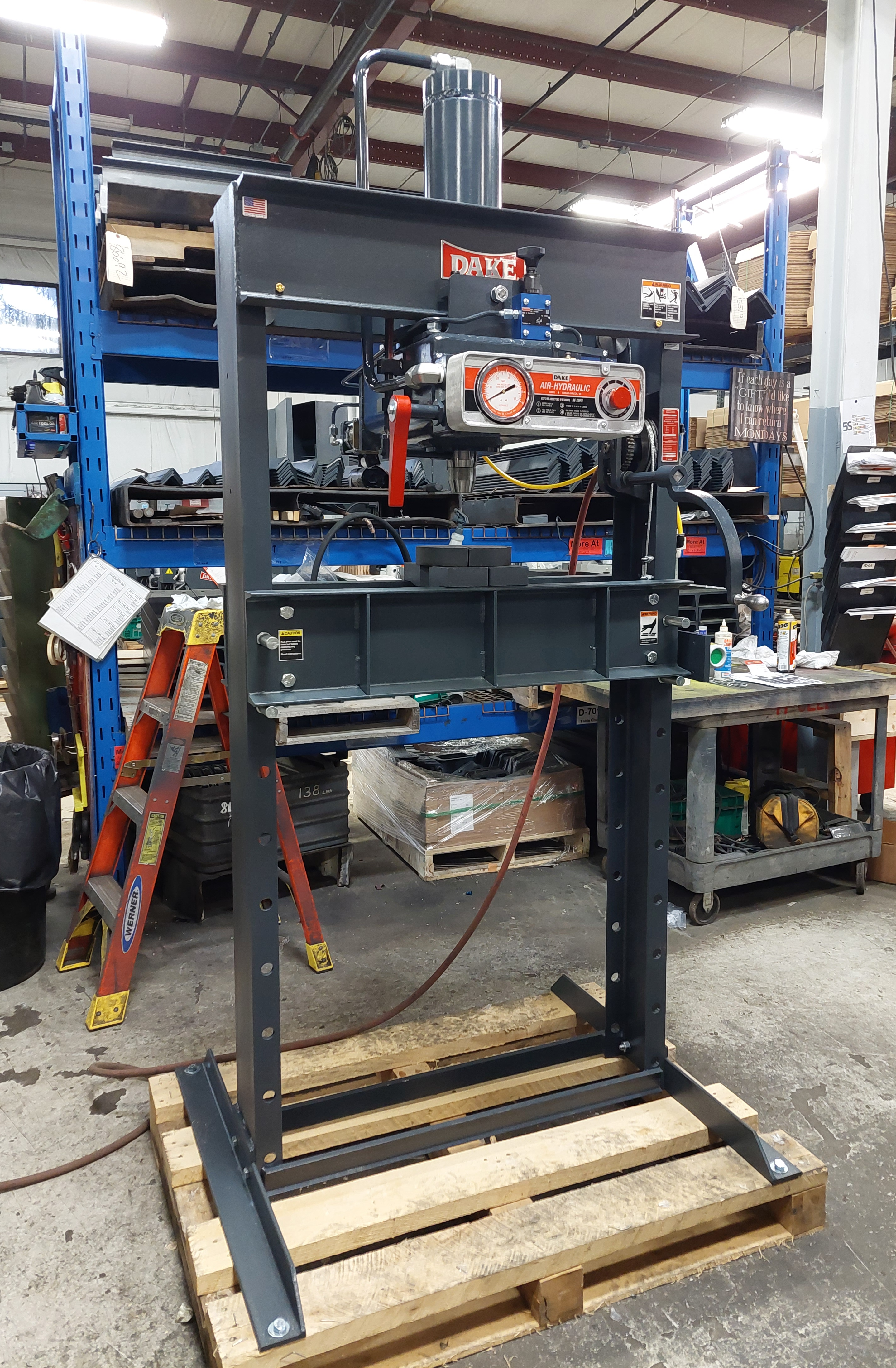Dake has been in the metalworking press business since 1945. We know presses. They come in all different shapes, sizes, and are used for all kinds of applications.
Choosing the right press for your metalworking application seem difficult, but it doesn't have to be!
All you need to do is ask yourself three simple questions.
A Little History and Principles of Hydraulic Presses
Hydraulic presses have been a major workhorse for many years. The function and principals of Pascal’s principle- pressure throughout a closed system is constant- still ring true today.
Since the advent of the hydraulic press (around 1795) many components have been improved but the theory and principles have remained the same.
Hydraulic presses are amazing pieces of equipment, yet so simple. Only three basic components are required to make the whole thing work.
- A pump- used to transfer the oil from a reservoir. This can be in the form of an electric, air or manual pump.
- A Control Valve- used divert or meter the flow / direction / volume of the oil.
- A Cylinder or Workhead- used to fill the area above the piston cap with oil through the A port. This forces the piston down.
The control valve then redirects the oil either to the B port for double acting cylinders or diverts it back to the reservoir on spring return single acting cylinders.
3 Questions To Ask To Determine the Right Press For Your Application
Knowing how a hydraulic press operates can help you determine whether or not you need one for your application.
After you determine this, ask yourself these three questions.
- What is the size of the largest work piece?
For arbor and H-Frame presses this will dictate the throat size (horizontal opening) and daylight (vertical space required). - What pressure is required OR what capacity is required?
For arbor presses and H-Frame presses this will dictate how much force is required to perform the pressing operation. It is recommended to always double the tonnage required.
This prevents premature wear of continually using the press at its maximum capacity. Due to not maxing out the press capacity, you will have less wear and tear on both the machine and the operator. - What speed and/or frequency do I need to operate the press?
For arbor presses and H-Frame presses this is "how often" or "how many"- how often will the press be used? how many parts or operations per shift is required?
If the required amounts are quite high a manual press that depends upon the operator pumping the piston may not be the best choice. An electric or air model would be more suited for an operation like this.
-1.jpg?width=1200&height=525&name=DAKE003_%20Logos_Red%20(002)-1.jpg)

.jpg)


